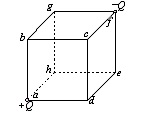问题
单项选择题
Passage Two
| Britain’s emissions of greenhouse gases, blamed by many scientists for contributing to global warming, have fallen by 14 percent since 1990, according to the latest government report. British lakes and rivers are also on the road to recovery from acid rain poisoning, following successful curbs to air pollution from cars and heavy industry. The report by the National Atmospheric Emissions Inventory (NAEI) attributed the drop in greenhouse gas emissions to several factors including: the introduction of catalytic converters on cars, a move toward low sulphur and lead-free petrol and a switch to gas from coal and oil in power generation. Environment Minister Michael Meacher said the downward trend was welcome, but warned of complacency. "Even though these figures are encouraging, we must not be complacent. There are still significant problems where we need to do more, for example, to further reduce greenhouse gases and harmful pollutants (污染物) such as ammonia and particulate matter," he said in a statement. The government has a target to cut greenhouse gases by 23 percent by 2010 on 1990 levels. This is almost double the target of 12.5 percent to which the UK is committed under the Kyoto Protocol and there are signs that emissions are rising as generators return to using coal-fired power stations in the face of rising natural gas prices. The Department of Environment Food and Rural Affairs (DEFRA) said substantial curbs on sulphur dioxide emissions across the UK and Europe had cut acid rain by half over the last 12 years. "Damaged freshwater lakes and streams are showing signs of recovery," it said. But DEFRA warned of a new threat. "Nitrogen oxides and ammonia are the main air pollutants that must be tackled to stop future damage. " The bulk of Britain’s ammonia emissions come from farm animal manure (粪肥), causing over-enrichment of land and waterways, said the report. Certain species rampage unchecked through this ultra-fertile environment, smothering the slower growing plants beneath them and choking streams and rivers. Nitrogen oxides enter the atmosphere from car exhausts and industry, creating health-damaging ozone and contributing to acid rain. |
The word "complacent" (Para. 5) can be best replaced by ______.
A.disappointed
B.discouraged
C.satisfied
D.excited
答案
参考答案:C
解析:词汇题。此词可根据上下文的逻辑来判断。文章在前几段先讲英国控制温室气体排放取得了一些成果,但紧接着环境大臣说,虽然这些成果是鼓舞人心的,但我们不能就此满足,仍有更多的问题需要我们付出更多努力。所以complacent是“满足的;自满的”的意思。故C是正确答案。

